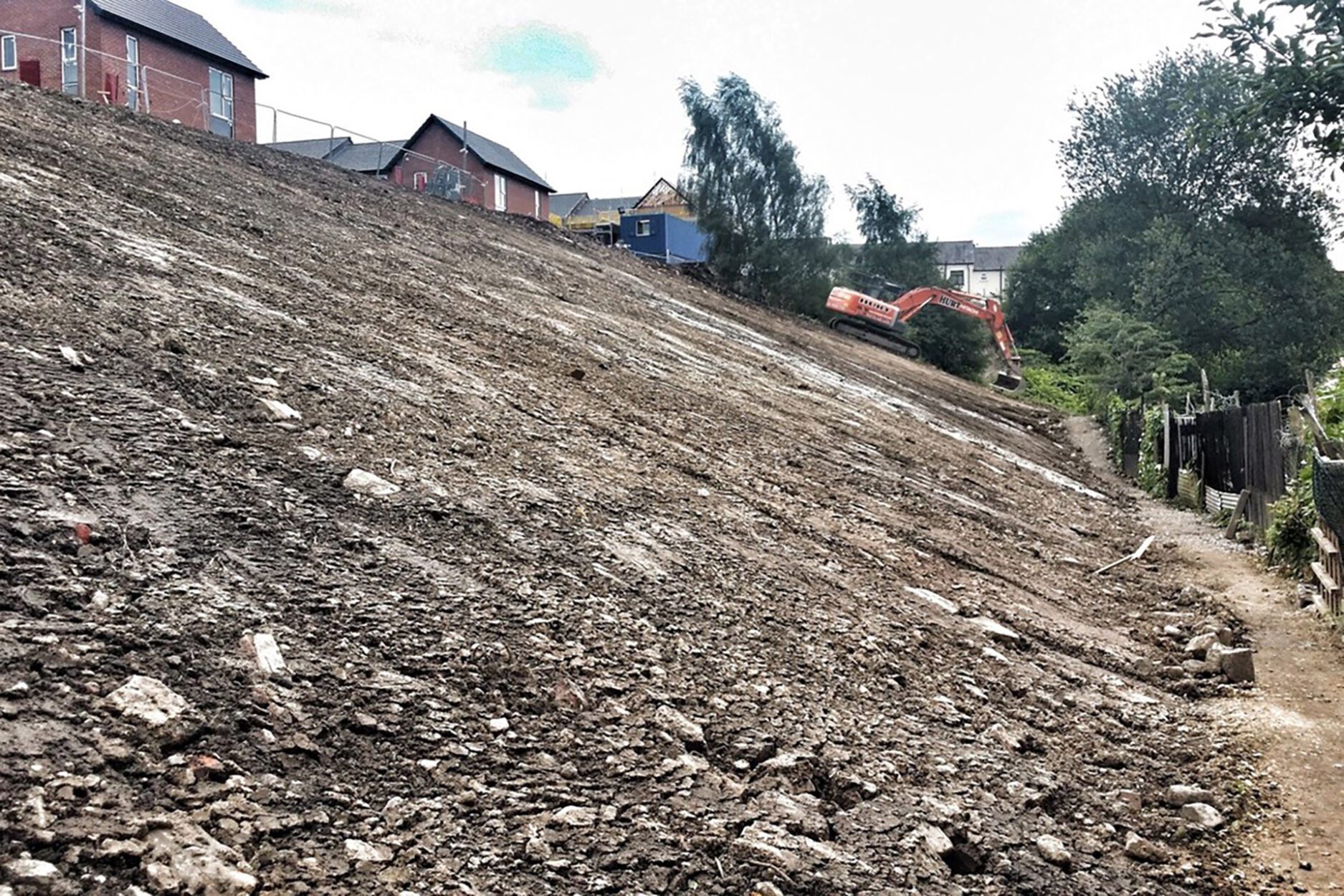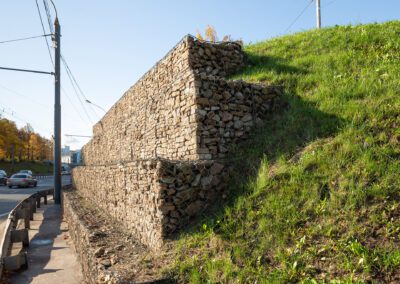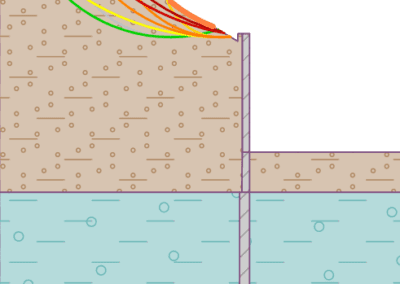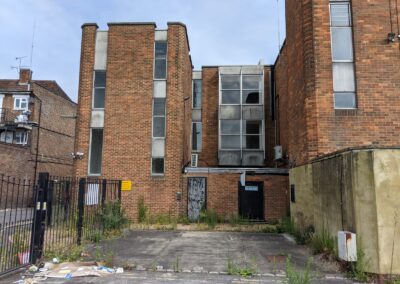A slope stability assessment is based on the stability condition of soils and rock on both natural and man-made slopes such as embankments, excavations, landfills and road cuts and their ability to withstand or undergo movement from gravitational forces, seepage or any dynamic load such as earthquakes.
We carry out an assessment to prevent the initiation of any such movement and eliminate the deformation on a slope, rather than simply minimise it.
Why do I need a slope stability assessment?
In areas where slope stability could be in doubt, it is likely that you will need a slope stability assessment report prior to development. You may require this report to achieve planning permission, for temporary works, or for remedial design.
The stability of any slope is critically important in geotechnical engineering applications because slope movement can result in catastrophic failure, causing substantial damage to both structures and infrastructure. Our slope stability assessment will assess the safe design of any slope on your site.
Why use us?
- Established over 20 years.
- One-stop multidisciplinary.
- In-house land drilling with rigs.
- Collection of technical experts.
- Ex-local authority regulators in our team.
A slope stability assessment can consist of one or more of the following:
Site walkover
We always recommend a site walkover as part of our phase 1 preliminary risk assessment and for planning the phase 2 geotechnical site investigation. During this essential activity, we are able to map all the features of the slope, which will then be incorporated into our slope stability analysis. You can be confident that our modelling is based on the characteristics of the real slope.
Intrusive investigation
Our intrusive investigation obtains information on the physical build-up of the slope and allows an assessment of its geotechnical properties to inform a slope stability assessment. This typically involves us drilling boreholes or digging trial pits to take soil samples and to install groundwater monitoring wells. The properties obtained from the in-situ investigation and laboratory analysis are then used in the slope assessment using specialist software utilising Eurocode partial factors.
Slope stabilty risk assessment
A slope stability risk assessment includes the probability of any dangerous events that might occur and the possible area of the slope involved and what the severity of the damage could be.
The analysis of this risk will take into account the topography of the slope, the geotechnical characteristics of the soils or rock (e.g. strength, angle of shearing resistance, unit weight), the saturation degree of the soils and vegetation present on the slope. Our assessment can include short and long terms stability analysis using information from the preliminary assessment findings, site walkover, geological maps, historical data, borehole data and laboratory testing results.
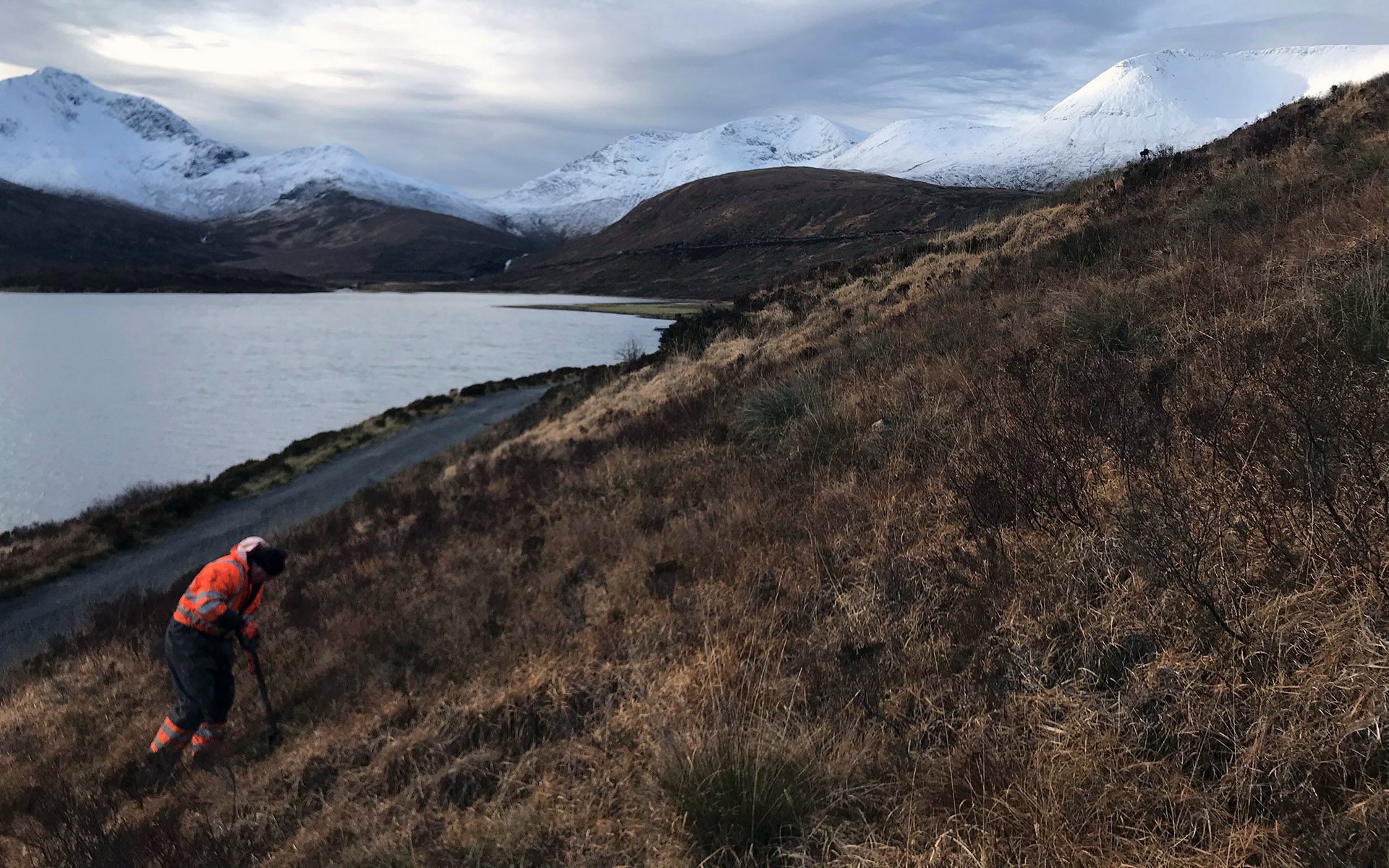
Site walkover
We always recommend a site walkover as part of our phase 1 preliminary risk assessment and for planning the phase 2 geotechnical site investigation. During this essential activity, we are able to map all the features of the slope which will then be incorporated into our slope stability analysis. You can be confident that our modelling is based on the characteristics of the real slope.
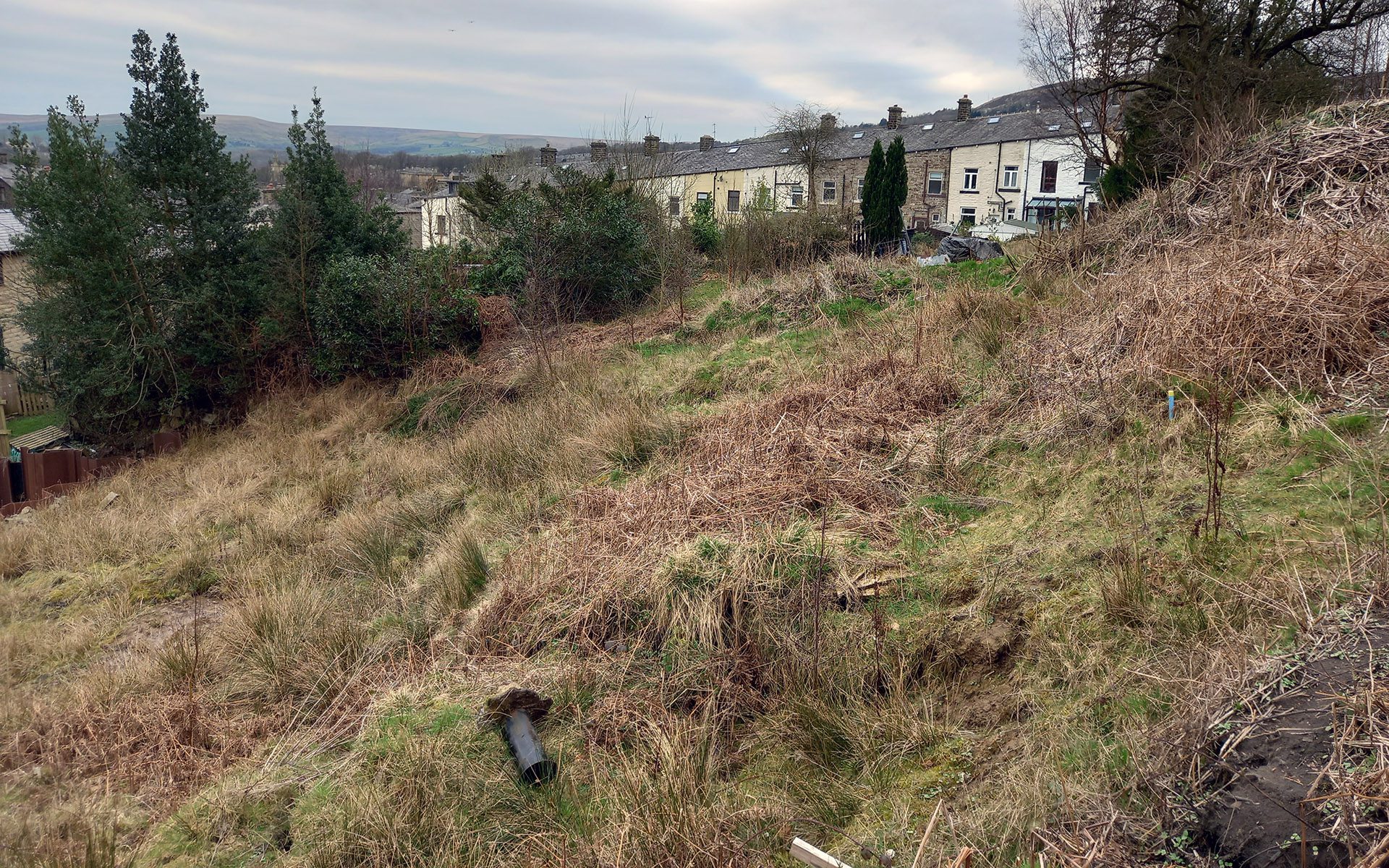
Intrusive investigation
A phase 2 geotechnical site investigation is required to discharge planning conditions or remove objections, once planning permission has been granted. This typically involves us drilling boreholes or digging trial pits to take soil and water samples for laboratory testing.
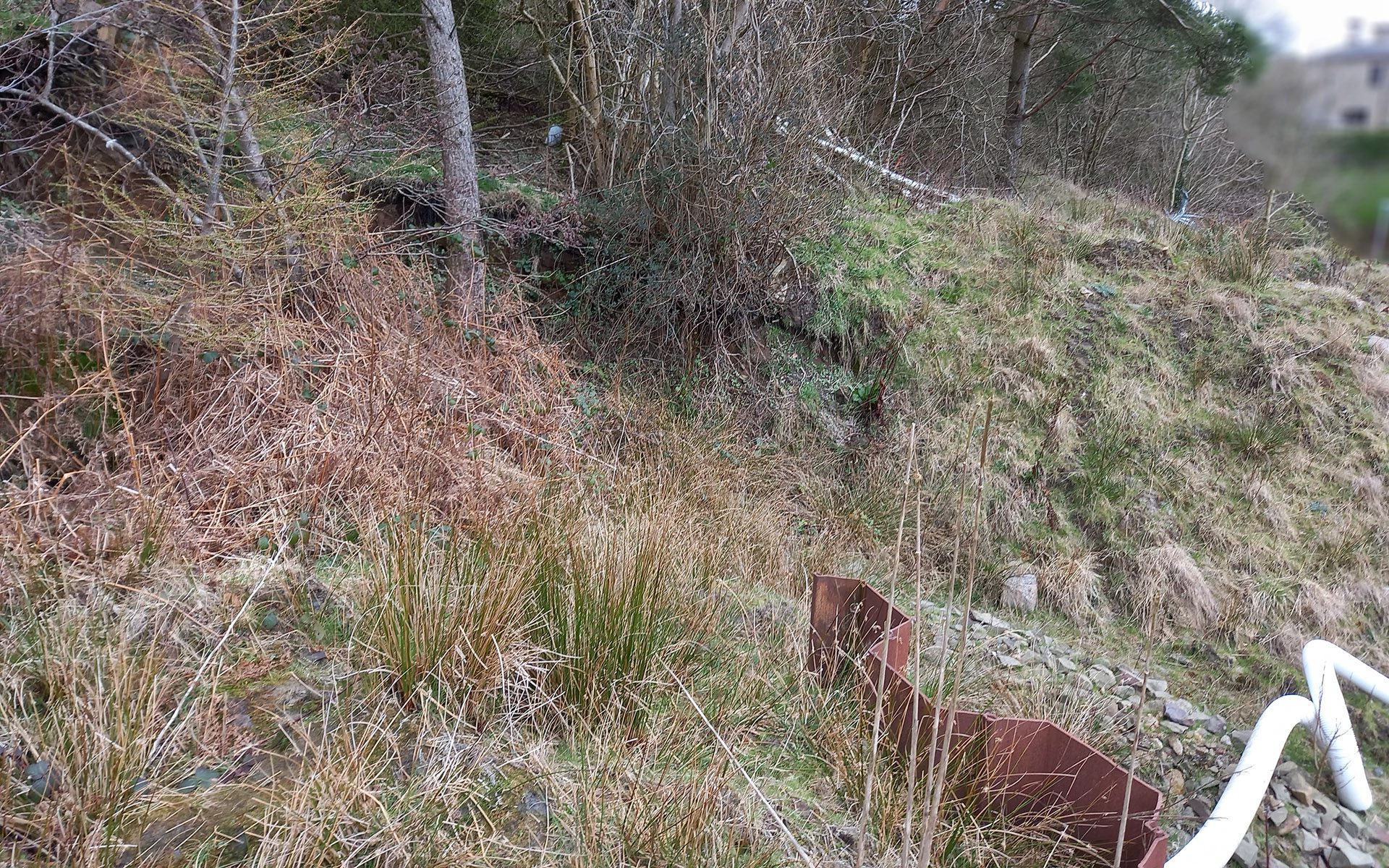
Slope stability risk assessment
A slope stability risk assessment evaluates the probability of any event occurring which could compromise the stability of the slope, the possible area of the slope involved and the likely severity of the resulting damage.
Our analysis of this risk takes into account the topography of the slope, the geotechnical characteristics of the soils or rock, the degree of soil saturation and any vegetation present. The assessment can include short and long term stability analysis, using information from the preliminary assessment findings, site walkover, geological maps, historical data, borehole data and laboratory testing results.
Latest case studies
Get in touch today
We have offices throughout the UK.
info@thelkgroup.com
0161 763 7200 Manchester
01793 987 390 Swindon
0151 235 8716 Liverpool
0141 773 6269 Glasgow
What our clients say
“It can be difficult to find a value-driven consultancy capable of offering meaningful and pragmatic advice at short notice. The LK Group does this. They tailor their services to a wide range of site-specific challenges on my sites and then get on with it. Their approach is always straightforward.”
Steve Lancaster
Director, Lancaster Maloney Limited
WHO WE WORK WITH
SERVICES
Geotechnical
Geotechnical site investigations, slope stability, earthwork designs, plate load tests, basement impact assessments, in-situ geotechnical testing, coal mining risk assessment.
Contaminated Land
Site investigation, risk assessment, de-risking sites, validation, coal mining assessment, basement impact assessment–contamination, remediation design and validation.
SuDS and Flood Risk
Flood risk assessment, SuDS assessment and design, soakaway testing, river modelling, fluvial geomorphology, geographical information systems.
Land Drilling
All-terrain & handheld window sampling, rotary drilling, dynamic probing, concrete coring, cable percussive, gas & water installations, foundation pits, soakaways, falling head tests, CBR tests.
Land Remediation
Specialist remdiation contracting, site clearance, ground improvements, bulk earthworks, soil stabilisation, pilling matt installation, remediation strategy, site enabling works.
Japanese Knotweed
On-site spraying treatment, burial cells, screening, high-performance geo-membranes installation, off site removal, steering member of The Invasive Non-Native Specialists Association.
Project Management
Client side project management and principal designer services to property developers, local authorities and property investors. From feasibility to defects liability stage.
Air Tightness Testing
Air tightness testing and reporting, energy and sustainability reports. A compliance test required for all new residential buildings in the UK.
